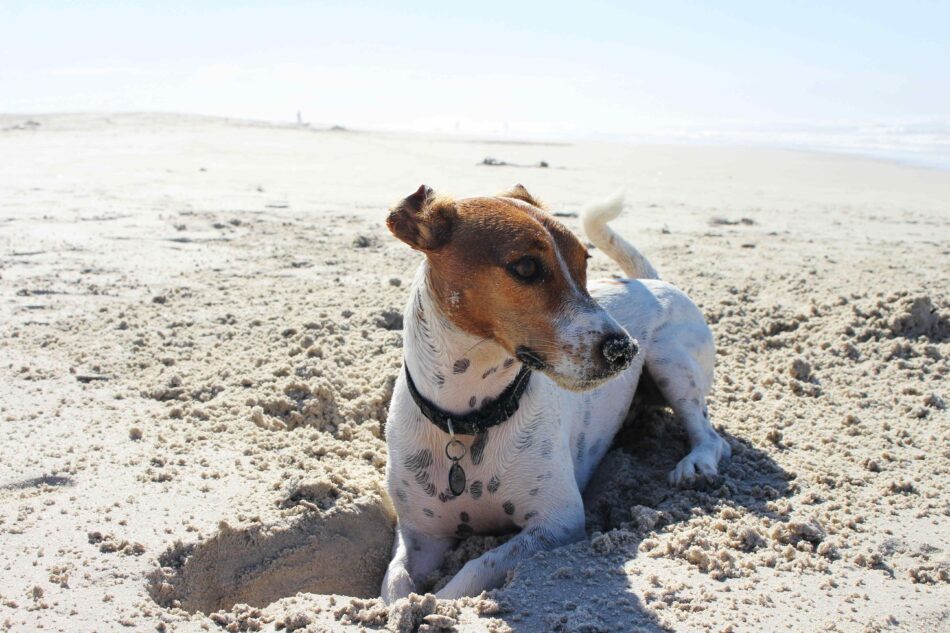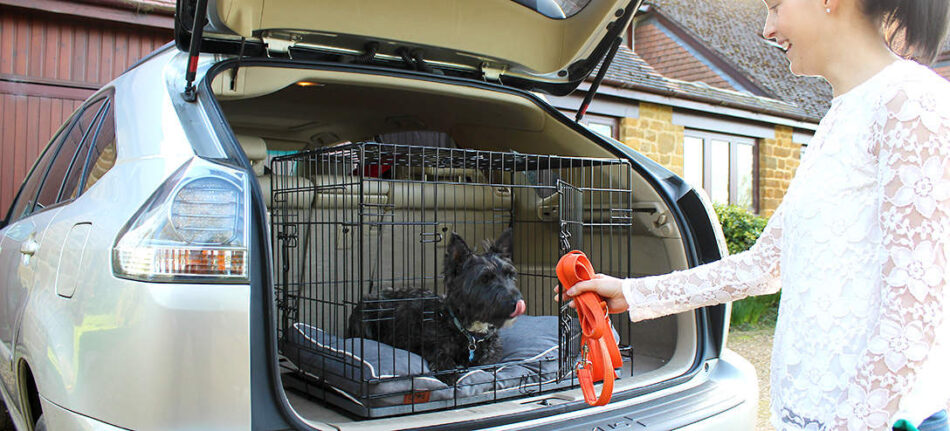Can I bring my dog on holiday?

Summer is here and what better way to celebrate than with some well-deserved time off! For some, an exotic island getaway may be on the cards, and for others, a few days away camping will be more than enough to reflect, relax, and enjoy the sunshine. One thing that all dog owners will agree on though, is that our pets are part of the family. And rightly so, we want them to be included in making special memories (including holidays!) If you’ve never been away with your pet pooch before, you may be asking the question ‘Can I bring my dog on holiday?’ or maybe you’re just a little unsure how to go about organizing a trip with a four-legged addition. So, here’s everything you need to know about taking your dog on your summer getaway.
What preparation should I do before taking my dog on holiday?
First and foremost, to make your trip as enjoyable for all as possible, you should ensure that your dog is holiday-ready before setting off! This includes making sure that they are properly trained e.g. having a reliable recall and being able to settle in their crate. Not only will having a well-trained dog make the holiday a lot more enjoyable but will make it a lot safer, too.
Furthermore, you should also be sure that your destination truly is dog-friendly for your dog. Just because somewhere has labelled their property or attraction as ‘dog-friendly’ doesn’t necessarily mean that the needs of your pet, who you of course know better than anyone else, will be met. For example, is the garden properly secured? Or is the property located in a particularly lively resort which could result in your dog becoming overwhelmed? Do they allow dogs of all sizes or just those under a certain weight? It’s important to have questions like these answered before going away.
You should also visit to your dog’s vet, where you can check that their vaccinations, and flea and worm treatments are up to date. Just like us, dogs can be affected by motion sickness when travelling. If you know this is the case for your pet, your vet will also be able to prescribe your dog medication for the journey. If you’re travelling abroad, you will also need to be provided with relevant documentation, which we will discuss shortly.
How can I travel with my dog?
Travelling by car
If you’re holidaying in the same country, the chances are that you’ll be travelling to your destination by car. Before setting off on a long journey, you’ll want to make sure that you have everything you need to ensure the ride is as comfortable and safe for everyone as possible. For one, your dog needs to be restrained in the vehicle either with a dog seat belt, pet carrier, dog cage or dog guard. In the UK, this is a legal requirement. Also, if it’s a warm summer’s day, you’ll ideally want to head out as early as you can in the morning or late in the evening when the car will be at its coolest.
During your journey, it’s important to make sure that your dog doesn’t overheat. You can help keep the car cool by keeping the windows slightly open, but not wide enough for their head to be sticking out. Alternatively, turn on the car’s air conditioning, being mindful not to have it directly blowing on your dog’s face.
We recommend making time to stop off at a dog-friendly service stations for all of you to stretch your legs, for your pup to have a toilet break, and to have a refreshment (a portable dog water bottle is a great option!). When you arrive at your first stop, park in a shaded spot if it’s a warm day – this will help keep the car nice and cool for when you get back in. Needless to say, you should never leave your dog unattended in the car at any point on your travels.
Travelling by plane
We’ve already spoken about travelling with your dog in the car but to get abroad it sometimes means using other modes of transport! When it comes to flying, the rules differ between airlines but in many cases, dogs, excluding assistance dogs, are only allowed to travel in the hold. Some airlines, however, do not allow pets in either the hold or cabin, so please contact the airline you plan on travelling with to avoid disappointment.
Travelling by train
When it comes to travelling by train, things are a bit easier! In the UK, dogs can travel without an additional charge. They should be kept on a lead or in a crate at all times (not on seats!). If your dogs are a nuisance or are endangering members of the public, then, of course, you could be asked to get off the train at the next stop. It’s also worth noting that you are only allowed to travel with a maximum of 2 dogs.
Can I take my dog abroad?
If you live in the UK and will be remaining in Europe during your travels, then your dog will need to have an animal health certificate (AHC). These can be obtained from your vet but must be signed off by an official veterinarian (OV), so be sure that your practice provides this service. You should also be aware that this certificate can only be issued 10 days before you travel. Furthermore, a maximum of 5 pets can accompany you, unless you are travelling for dog training, a show, sporting event or a competition, which you’ll need to provide written evidence of.
Should you want to travel outside of the EU, an official veterinarian (OV) must provide you with an export health certificate (EHC) and you will also need to complete an export application form (EXA). You can find more information on this, visit the UK government website.
Ultimately, what both of these certifications say is that your pet is fit to travel, microchipped, is free of anything that has the potential to spread to other animals or humans, and has their up to date vaccinations, as well as yours and your dog’s information e.g. address, dog’s breed, pet and owner’s name etc.
Settling your dog on holiday
Taking your dog on holiday is as big an adventure for you as it is for them! For our pets, a new location means not only plenty of unfamiliar places but also so many new things to explore and smell. You should try to keep their routine similar to how it is back at home so that they don’t feel unsettled or stressed. For example, you should give them their food and walks at the same time as you normally would. At the same time, it’s also important to give your pet some time to settle in their new environment by letting them get enough undisturbed rest.
Taking something familiar to your dog is also a great way to help them settle. This can be their dog blanket, dog bed or a dog toy they enjoy playing with. The Nest dog bed from Omlet is perfect for travelling, as it can slide right into their crate. Plus, it’s super lightweight without compromising on comfort for any bumpy roads along the way. You can also take a dog pheromone diffuser for a more anxious dog, which can help them to stay calm.
Omlet and your dog’s holiday
Your dog’s holiday can not only be stress-free but an enjoyable trip for everyone with Omlet’s Nest dog bed, and dog blanket to offer them support in a new environment. Not heading away on summer break this year? Check out 7 things your dog needs this summer for some top tips for enjoying this season at home.
This entry was posted in Dogs


